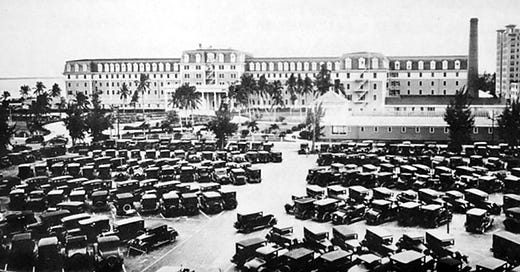End of Miami’s Royal Palm Hotel
The story of the last years of Henry Flagler's iconic Royal Palm Hotel in downtown Miami, Florida.
The first twenty years of the Royal Palm Hotel represented a time when the hotel was the center of social activity for the growing City of Miami. It sat in one of the most desirable locations in the city and was a big part of the reason why the city became an annual destination for wealthy and famous visitors each and every winter season.
However, both progress and untimely events would impact the fate of Miami’s iconic hotel. The father of Miami and financier of the Royal Palm, Henry Flagler, passed away in May of 1913. The hotel continued to thrive for several more years following Flagler’s death, but would lose its standing as the city’s most important attraction by the mid-1920s.
Keep reading with a 7-day free trial
Subscribe to Miami History to keep reading this post and get 7 days of free access to the full post archives.




